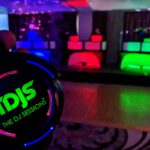Death of the Studio

10 Pedals Every Guitarist Should Own
A little over 15 years ago, I was a bright-eyed freshman in college looking to take what I’d learned in my shitty high school band (which peaked with a few 100-degree days on Warped Tour the summer after we graduated) and turn it into a music degree — or at least a minor.
Under the esteemed California university that I was attending, I had two options for my first introductory-level class (I’d need to take both eventually, but Gen Ed requirements meant they’d be one at a time): Music Theory or Music Technology/Production. I still don’t know shit about music theory (occasionally to the disappointment of my current bandmates) because I chose to go the technology route, figuring that would help my nonexistent future bands record better-sounding demos than the XLR-to-USB converter I’d been using as a recording interface at the time.
More from Spin:
How The Beaches’ Kylie Miller Uses PRS Guitars to Bring Timeless Pop-Rock to the Forefront
G&L Guitars Is Bringing Leo Fender’s Heritage to the Modern Age
10 Pedals Every Guitarist Should Own
At this point, I’m sure you’re wondering where this story is going and why it’s even remotely relevant to be at the top of this piece — and we’re finally there. For roughly three months, a music professor (who was an old flamenco and jazz guy, if memory serves correct) taught two dozen 19-year-olds about how if we really wanted to get professional-sounding recordings, we needed to learn Pro Tools like the back of our hands and shell out for an Avid Mbox 2 if we weren’t going to have a studio at our disposal. That is, unless we were one of those “Apple weirdos” who wanted to use Logic (granted, MacBooks and iPhones were pretty much novelty items at this point).
Over the course of that semester, I felt pretty good about how much I’d learned to do in Pro Tools and that I had hands-on experience with an Mbox 2. I felt like while I might not want to be the one mixing or mastering anything, I could at least walk into a studio and have some idea of what I was talking about.
And yet, by the time I’d strum a chord in a professional studio roughly a decade later, none of that knowledge would be viable anymore. It was the equivalent of knowing how to run Windows 95 when everyone else is on a smartphone. Yes, Pro Tools could still be found in many major studios, but the recording world had changed so drastically while I hadn’t been paying attention — and had really begun changing already by the time I got to college — that it made any knowledge I thought I had completely obsolete.
But perhaps even more surprising is that the professional-grade studio I walked into in 2018 is already a relic by today’s standards. The rise of the “prosumer” (a high-end consumer, with near-professional levels of desire and budget), content creators (YouTube, podcasts, Twitch, etc.) and bedroom producers (particularly during the pandemic) in the last handful of years has brought about a revolution of consumer-facing recording and producing gear specifically designed to give professional-level results with a more reasonable price point and footprint.
The racks and racks of analog equipment and massive mixing boards can largely be replicated by digital plugins and hardware a fraction of the size (and cost). Professional session musicians, songwriters and bands can add a little acoustical treatment to a spare room (or not), record their parts from home and share them digitally rather than needing to gather in a single studio with their collaborators. From a purely technical standpoint, there just isn’t much need for a professional studio anymore unless you want a truly hi-fi experience or need some rare analog gear that hasn’t been accurately replicated yet (with more being flawlessly converted seemingly everyday).
So after that hell of an introductory explainer, here’s some of the gear your favorite bands are using to record at home these days — and how much it’ll cost you on a platform like Reverb.
Assuming that you already have your favorite instrument, amps, and whatever else you need to actually make the music picked out, let’s start off with the most obvious piece of hardware you’ll need to record, the audio interface.
The audio interface is effectively the meat in your recording sandwich. Go to a top of the line studio and they’ll have the premium surf and turf option that costs thousands. Head on Amazon and you can find plenty of Great Value bologna options for under a hundred bucks. So where’s the happy medium? Well, there’s two things to consider.
The first (and perhaps most obvious) thing you’ll need to consider is how many inputs and outputs you want/need, and what types. Keep in mind that using a microphone requires an XLR input (for best results) whereas plugging an instrument (like a guitar or bass) straight in uses a ¼” spot. Of course, maybe you want to mic your cab instead of going DI (direct input), which means you then need a second XLR if you want to record vocals and the cab at the same time. Sure, theoretically you could record everything through a single microphone and XLR input, but that can end up a tedious and stressful process — particularly once drummers get involved.
The other, more subjective, area to look at is the quality of the sound and the features on an interface. Yes, there are boxes out there that will effectively just convert a signal from an XLR or ¼” input to a USB-C (or whatever other input that you should definitely check you have before buying an interface) for cheap, but it’ll probably sound terrible. That’s because microphones need preamps to replace the magic that’s often lost in the digital conversion, and some of the slightly more expensive options have a host of quality of life features that just make everything sound better (and often easier to work with).
Based on way too many hours spent hanging out with bands recently (plus my own musical experience), there are two options for interfaces that are both excellent and widespread.
If you want a no-nonsense blue-collar option, the Focusrite Scarlett is about as cheap and reliable as they come. Some of the extra features work better than others, but it’s hard to argue against it when the line starts at $140 for the Scarlett Solo and the 4i4 only costs double that. On Reverb alone, the 2i2 saw a 32% year-over-year increase as of September 2023, while the 4i4 saw a 104% increase in listings in December 2023 — so it’s no secret that the Focusrite interfaces are extremely popular.
However, if you’re willing to shell out a little bit more money, the Universal Audio Volt series is a much more comfortable and professional experience for right around the same price range. Without going into too much detail, in the world of “plug and play” interfaces that are meant for practice spaces, tour buses and bedrooms (as in, not the Volt’s industry standard older brother, the UA Apollo whose absolute base version starts at $500, with four-digit price tags on the versions found in studios around the world), the Volt offers better preamps/sound quality, features and options than pretty much anything else. As an added bonus, the biggest and most expensive size, the $469 Volt 476P comes with four preamped inputs that fit either an XLR microphone or a ¼” instrument cable — which means an entire band (or at least drum kit, more on that in a bit) can be mic’d at the same time. It’s not easy to find a high-quality interface that you can send straight into a smartphone with four mics running through it, but the 476P offers just that (and even some independent options and control over the preamps used on each one).
Working backwards from the interface (and assuming you have your computer/smartphone/tablet situation figured out for whatever you’re running the interface into), the next step up is the microphones. Well, technically it would be the cables, but those are really a personal preference — audio nerds swear by expensive options like Mogami Gold, while the rest of us are totally fine using brands like Ernie Ball and no one ever notices the difference.
Perhaps the most difficult thing about finding your initial recording setup really is the choice of microphones. There’s no way to know how each one is going to sound with your voice, instruments, room noise, or whatever else you’re recording. One thing that is pretty safe to say is unless you have a relatively silent or well-soundproofed room, use dynamic mics over condensers. I know it seems like you want the accuracy and quality of a condenser microphone, but the sensitivity is a real pain in the ass when a car honks three blocks away and ruins the entire take.
With that said, you should probably own a Shure SM58. Have you gone to a concert before or heard someone talk into a microphone? Great, then you’ve probably seen and heard the SM58. I’m not saying everyone uses it all the time, but most people have used one at some point and a lot of people swear by them for their vocals. It sounds great, it’s often available under $100, it’s borderline indestructible, and if you somehow lose or break it, you can pop into a music store, audio store, or maybe even an electronics store and find a replacement anywhere in the world. Seriously, stop asking questions and go get one.
Now, that’s not to say that the SM58 is the answer for everything. As a matter of fact, it’s almost certainly not. Most will tell you the Shure SM57 (see: the SM58 in disguise, but a weak disguise like a fake mustache and glasses) is better for recording instruments, whereas the SM58 is primarily a vocal mic. Those people would be correct. There are reasons it’s also an industry standard, and those reasons are basically all of the same as the SM58, except it’s better when it’s not in front of your mouth. It would also look weird to sing or talk into it, but that’s a different story.
There’s also a different level of vocal microphone out there. It’s the level for people who feel they’re too good for the SM58. Maybe it’s because they have a podcast and need to have a podcast-looking mic to make up for the fact that no one cares about their podcast, or maybe they’re not a terrible person and just want to have a separate mic for their home studio/desk so they can leave the SM58 in their gig backpack (with appropriate cables, guitar pedalboard, straps, etc.) to use onstage where it belongs. Well, Shure would tell you that the SM7B is the mic for you, and a whole lot of podcaster and influencer types would probably agree (according to Reverb’s statistics, listings for the SM7B were up 75% year-over-year in December 2023, a month that also marked the most-ever “Watches” on Reverb for the SM7B). But that costs $400, so let’s look at something in a different direction too.
The Beyerdynamic M 70 Pro X is about as close to the SM7B as you’ll get, and it’s often found on sale for right around the same price as an SM58. It may take a little more refining than the Shure stuff and has a very different feel (it’s German, after all) from the other mics mentioned to this point, but it’s a hell of a lot of microphone and can often be found for $99 — particularly if you’re just looking for something to use in a home office setting (even if it’s your “studio” on nights and weekends).
But why stop there? Beyerdynamic’s whole line of “Pro X” stuff seems determined to fill that “prosumer” niche I mentioned earlier. It’s specifically targeted at the content creators and indie recording artists who want professional results at amateur price points, and everything we’ve seen or tried so far has been pretty damn good. For instance, if you want to experiment with a condenser mic (or if you want to see how soundproof your room actually is), the M 90 Pro X is essentially a professional-grade condenser microphone that goes on sale for $150.
On the other end of the music-making spectrum, we’ve all known that Beyerdynamic makes some of the best recording headphones in the game. Although I’ve agreed to abstain from dropping names throughout this entire piece, one of my rock ‘n’ roll heroes recommended their DT 770 Pro headphones back in 2013, and I wore them for years before I (probably) let a bandmate borrow them and never saw them again. Guess what? They made a limited edition of a DT 770 Pro X ($200) this year, which combines the sound profile of the 770s with the upgraded convenience and features (like a removable cable) of the newer DT 700 Pro X ($270). Headphone nerds will fight you for days on end about what the “best” headphones are, but you’ll rarely see a “Best Of” list not featuring any Beyerdynamic models.
Look, all I’m saying is if you’re reading this far and spending a bunch of money on recording gear, a decent set of headphones is generally a lot cheaper, smaller and more polite than high-end studio monitors. Pick whatever brand you want (just please not Beats), but for my money, I’m going Beyerdynamic.
Moving on, we need to talk about the bane of every band’s existence when trying to record on the cheap: drummers. Sure, OK, whatever, drummers are people too. But unlike pretty much everyone else in a conventional band, they’re impossible to record with a single microphone (if you sing and play an instrument, that counts as two responsibilities so of course you need two mics). If your drummer is anything like the drummers I know, they’ll boast about only needing three microphones to record their entire kit, as if that’s not the same amount that the rest of an entire 4-piece band would need. Mind you, those three mics need to be in exactly the right place (they never are on the first time through) and each requires their own input (now you see the value of the UA Volt 476P).
Since we’re already talking about Universal Audio (if you read the parentheses, which you should), let’s start off with their brand new solution. The UA SD-3, SD-5 and SD-7 are (predictably) a continuation of their SD-1, their answer to the aforementioned SM7B that features mic modeling software to have it replicate all sorts of other iconic microphones from different distances and such. Anyway, with these three mics, you may still run into the same issues as you do anytime you’re trying to mic drums — however, they offer both a high level of clarity at all sorts of volumes and pitches that you usually have to pay twice as much for, as well as some wiggle room to make digital adjustments to them on the fly (meaning less time spent trying to adjust the mics over the drummer while he repeatedly hits the one cymbal that came out way too loud in previous mixes). While the whole “digital mic” thing from UA’s Hemisphere plug-in might be more of a novelty item for vocals, it can really make a difference on drums. Plus, you can digitally tune them to be better used for guitar, bass or whatever else after the drummer finally finishes laying down their tracks.
If you’re not into the whole digital thing, I will once again suggest Beyerdynamic for microphones that punch way above their price point. I only personally saw the TG D57 and MC 930 in action, but the M 88 and TG D58 are popular options as well. And if you (like me, who should never be allowed near a drum kit) are really not sure what to go with, they also sell the TG Drum Set Pro in three different sizes so you can get a variety pack to match whatever your drummer thinks they need.
Of course, there’s one other option if you really don’t want to bother with figuring out how to mic a drum kit, and that’s to grab an electronic kit instead. Do e-kits sound exactly the same as real drums? Probably not, but they’re getting closer. Are they still better than most of the AI drummers out there and can simplify everything for drummers and non-drummers alike? Absolutely. I wouldn’t recommend using one live, but if we’re talking about a bedroom recording space, you’ll make a whole lot less enemies than having a real drum set in the same place. Plus, if everyone else in the band is going DI instead of playing through amps and a PA, go ahead and join them with digital drums.
And as far as e-kits go, the Roland TD series seems like a great starting point for people who need something compact and efficient that’ll just work while connecting to your recording device via USB (or Bluetooth with an adaptor). Sure, it’s very much an entry-level kit, but the smallest model (the TD-02K) comes in at $400 for a suitable practice option with a tiny footprint, and you’re probably better off saving the money and spending the difference on an acoustic kit or some extra drum mics unless you’re really committed to the e-kit lifestyle. It’s also backed by Roland, who’s generally figured out how to make high-quality products for the last 50+ years.
So now we have all of the big gear covered, which means we’re done, right? Wrong. It’s time for everyone’s favorite topic: guitar pedals. But not just any guitar pedals. Guitar pedals that can replace much larger and more expensive equipment that your favorite bands would’ve used in the studio back in the day.
For instance, that classic Marshall sound heard on countless hard rock albums that’ll set you back thousands (or possibly tens of thousands) and require the kind of maintenance that a decades-old amp always needs? Well, you could just scoop up the UA Lion ($400) for that one and consider yourself covered. The same goes for the other UA amp sim pedals, whether you’re looking for a classic Vox (Ruby) or Fender (Dream) sound.
But if you’re not into the UA universe and its high-end but pricier options, there are countless other amp and cab simulators that’ll do the job just fine.
The industry standard for a long time was Line 6’s Helix line, which is effectively the last guitar pedal you’ll ever need. Choose the right size for yourself and you’ll get amp/cab sims and every other effect you can imagine. It’s the complete package for both live and recording options — but it’s effectively like having a computer under your foot (or on your rack, if you go with a rack-mounted option).
Outside of the Line 6 family, IK Multimedia has the ToneX system for loading your favorite digital amp sounds, which includes the new miniature-sized and competitively priced ToneX One. And then there’s the Boss IR-2, another newcomer to the amp/cab sim game that sits at $200 in a standard Boss enclosure — which means both a comfortable size and unparalleled durability.
Speaking of Boss, they’re not just good for the standard overdrive, distortion and modulation pedals that have been on every guitarist’s board for decades. Their higher end models capture some of the most desired studio effects known to man — whether it’s the Space Echo packed into the RE-202 (a much more elaborate version of the RE-2) or numerous classic analog delays all smashed into the DM-101 (which is functionally an analog version of the classic Line 6 DL4, as an all-in-one delay wizard). Hell, you can even get the late Eddie Van Halen’s legendary delay presets with the SDE-3000, which Boss even worked with his estate on.
And if you’re looking for the favorite of the great Steve Albini (RIP), you can find all sorts of unique takes on a Harmonic Percolator without breaking the bank for a real one.
I know what you’re thinking. Now it’s time to get into DAWs and go deep into what you can use instead of Pro Tools to really bring this story full circle.
Well, the truth is that there are so many perfectly usable digital audio workstations in 2024 that it’s really a matter of personal preference — and Pro Tools is still a fine option if that’s what you’re into. If you’ve got a Mac and don’t know what you’re doing, start with GarageBand (and upgrade to Logic Pro when you need to). If you’ve got a bunch of UA stuff and want all the plugins to work natively, Luna is a great option. If you’re cheap and don’t mind looking up YouTube videos to learn how to do stuff without the DAW holding your hand, REAPER is awesome. Seriously though, you can’t go wrong. Just pick one and start recording.
To see our running list of the top 100 greatest rock stars of all time, click here.



















Comments
This post currently has no comments.